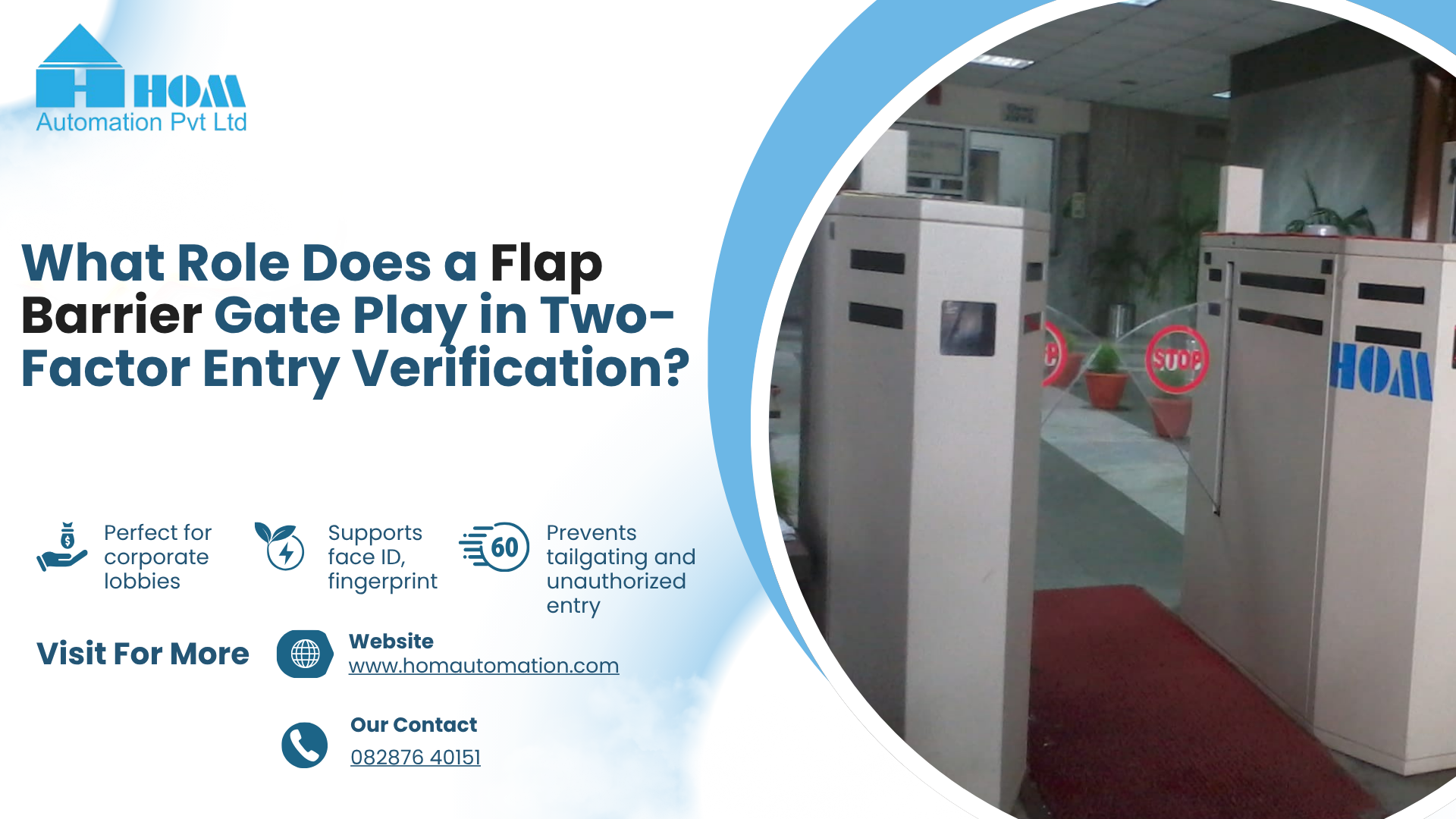Flap Barrier vs. Tripod Turnstile: Which Is More Suitable for Corporate Buildings?

When it comes to managing entry points in corporate buildings, choosing the right access control solution is critical. Two of the most common choices are flap barriers and tripod turnstiles. Each offers unique benefits, but selecting the best one depends on your specific business needs, security priorities, and visitor flow. In this article, we’ll explore key differences between these two systems, their functionalities, advantages, and which one is better suited for corporate use. By the end, you'll have a clear idea of what works best for your office space.
What Is the Basic Difference Between a Flap Barrier and a Tripod Turnstile?
A flap barrier uses retractable flaps that open sideways for entry, while a tripod turnstile has three rotating arms that move when access is granted. Flap barriers typically allow for faster movement and look more modern, whereas tripod turnstiles offer basic physical access control and are more cost-effective. Both systems integrate with ID cards or biometric systems, but their mechanism and aesthetics differ significantly.
Why Do Corporates Prefer Flap Barriers Over Tripod Turnstiles Today?
Corporates often prefer flap barriers due to their faster throughput and sleek design, which aligns well with modern architecture. They offer better aesthetics and smoother access, especially during peak hours when large volumes of people are moving in and out. Moreover, flap barriers can accommodate contactless entry and wider lanes for differently-abled individuals.
How Does Each System Handle Security in Corporate Environments?
While both systems are reliable, flap barriers provide higher security levels with infrared sensors that detect tailgating or unauthorized access. Tripod turnstiles, however, offer physical resistance, making it harder to force entry but can be bypassed more easily if not monitored. Flap barriers can also integrate more advanced access control features, offering layered security for sensitive office zones.
Which Option Is More Cost-Effective for Large-Scale Deployment?
In terms of initial investment, tripod turnstiles are more affordable and often chosen for their low maintenance and simple mechanism. However, flap barriers offer long-term value by improving user experience, brand image, and overall building security. You’ll need to weigh upfront cost vs. long-term benefits to decide which suits your corporate needs better.
What Should You Consider Before Choosing Between the Two?
You should consider factors like footfall, security level required, aesthetic preferences, and disability access. Flap barriers are ideal for high-end office buildings with high foot traffic, while tripod turnstiles are better for smaller setups with moderate traffic. Additionally, consider integration with existing systems and space availability before making a choice.
Why Hom Automation Is the Top Choice?
When it comes to choosing reliable, secure, and modern access control solutions, Hom Automation stands out. With a wide range of high-quality flap barriers and tripod turnstiles, they offer solutions tailored specifically for corporate environments. Their products are not only technologically advanced but also backed by professional support, quick installation, and excellent after-sales service — making them the go-to brand for corporate access systems.
Frequently Asked Questions
1. Which is faster: flap barrier or tripod turnstile?
A flap barrier is generally faster and allows smoother access for employees, especially during busy hours.
It opens quickly and closes automatically, making it more efficient than a tripod turnstile.
Tripod systems can cause slight delays due to physical arm rotation.
2. Are flap barriers more secure than tripod turnstiles?
Yes, flap barriers often include infrared sensors that detect unauthorized access or tailgating.
They offer better surveillance integration and alarm systems.
However, tripod turnstiles still provide basic physical restriction.
3. Which one looks better in modern office designs?
Flap barriers have a sleek, modern appearance and blend well with glass interiors and premium lobbies.
They also support wider lane designs and LED indicators.
Tripod turnstiles tend to look more industrial and less appealing.
4. Can both systems be integrated with biometric access control?
Yes, both flap barriers and tripod turnstiles can be integrated with biometric, RFID, or face recognition systems.
Flap barriers usually offer smoother biometric response.
This makes them ideal for high-security office premises.
5. What’s the maintenance like for both systems?
Tripod turnstiles require minimal maintenance due to their simple mechanism.
Flap barriers, being motor-driven, may need regular checks for smooth flap motion.
However, modern designs are built for durability and long-term use.
Conclusion
To summarize, both flap barriers and tripod turnstiles serve the essential function of access control but cater to different priorities. If your corporate building values aesthetics, high throughput, and advanced security features, a flap barrier is the way to go. On the other hand, if you need a budget-friendly, durable solution with basic access restriction, tripod turnstiles are a reliable option. For businesses looking to upgrade or install efficient entry systems, Hom Automation offers the perfect balance of technology, service, and customization. Choose smart, choose secure — choose the system that reflects your corporate identity.
- Art
- Causes
- Crafts
- Dance
- Drinks
- Film
- Fitness
- Food
- Juegos
- Gardening
- Health
- Home
- Literature
- Music
- Networking
- Other
- Party
- Religion
- Shopping
- Sports
- Theater
- Wellness
